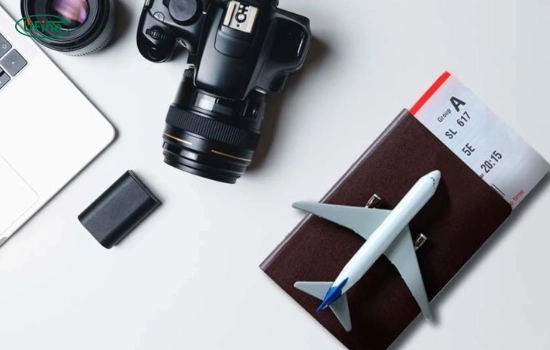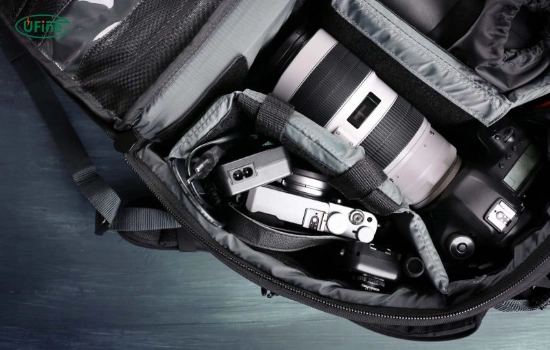
- Part 1. Can you bring camera batteries on a plane? FAA & TSA rules
- Part 2. Camera battery capacity rules for air travel
- Part 3. What type of camera equipment and camera batteries can I bring to a plane?
- Part 4. Are lithium camera batteries allowed on airplanes?
- Part 5. Are there any rules for carrying battery accessories on flights?
- Part 6. Pro tips: Packing camera batteries for air travel
Traveling with camera equipment and batteries for photography and videography can be daunting, especially regarding air travel. With the implementation of various regulations and restrictions on batteries, photographers, and videographers must be aware of what type of camera equipment and batteries are allowed on an airplane. In this comprehensive guide, we’ll explore the rules and regulations surrounding camera batteries on planes and provide tips on safely packing and transporting your essential gear.
Quick Answer: Can You Bring Camera Batteries on a Plane?| Question | Answer |
|---|---|
| Can you bring camera batteries on a plane? | ✅ Yes, lithium camera batteries ≤100Wh allowed in carry-on |
| How many spare batteries allowed? | ✈️ Max 2 spares per passenger |
| Where to pack them? | 🚫 Never in checked luggage |
| TSA battery size limit? | 🔋 ≤100Wh (no approval), 101-160Wh (airline approval) |
Part 1. Can you bring camera batteries on a plane? FAA & TSA rules
Direct answer to “Can you bring camera batteries on a plane?”: Yes, but with strict regulations. Modern cameras primarily use lithium-ion batteries classified as hazardous due to fire risks. Here are key FAA and TSA rules:

Essential Regulations for Lithium Batteries:
- Carry-on only: All lithium batteries MUST be in carry-on luggage (strictly prohibited in checked bags)
- Capacity limits: Batteries ≤100Wh require no approval; 101-160Wh need airline authorization
- Spare batteries: Limited to 2 spares per passenger with protected terminals
- Device-installed batteries: Unlimited if installed in cameras/equipment
Part 2. Camera battery capacity rules for air travel
Battery capacity (watt-hours) determines what you can bring. Use this formula to calculate: Voltage (V) × Amp-hours (Ah) = Watt-hours (Wh). Reference this table for quick guidance:
| Battery Type | Capacity | Carry-on Rules | Spare Limit |
|---|---|---|---|
| Lithium-ion (Li-ion) | ≤100Wh | ✅ Allowed (no approval) | Max 2 per passenger |
| Lithium-ion (Li-ion) | 101-160Wh | 🛫 Airline approval required | Max 2 |
| Lithium metal | ≤2g lithium | ✅ Allowed | Max 2 |
| Alkaline (AA/AAA) | Any | ✅ No restrictions | Unlimited |
| Spillable/wet batteries | Any | ❌ Prohibited | 0 |
Part 3. What type of camera equipment and camera batteries can I bring to a plane?
All lithium batteries must be carried in carry–on baggage only. This applies to all types, including Li-ion, Li-polymer, LiFePO4, and metal–hydride batteries. Additionally, each passenger is limited to two spare batteries. Transporting spare Li-ion batteries up to 100 watt-hours and spare lithium metal batteries up to 2 grams per battery is permitted when each battery is protected from short circuits only.
It is also essential to know what types of camera equipment, including tripods, are allowed on aircraft. Most airlines permit the transportation of small tripods, monopods, light stands, and stabilizers. When flying with a tripod, check your airline’s restrictions before packing the device. Monopods, light stands, and stabilizers must also meet security guidelines.
When traveling with camera batteries, the following guidelines apply:
- Spare batteries must be in carry–on baggage only
- Each passenger is limited to two spare batteries
- Spare lithium-ion batteries must not exceed 100 watt–hours per battery
- Spare lithium metal batteries must not exceed 2 grams per battery
- You must protect each battery from short circuits.
Remember that all rules governing the transport of batteries, cameras, and other electronics vary from airline to airline, so verifying the exact restrictions with your chosen airline before boarding is essential. Following these regulations and guidelines, photographers and videographers can rest assured that their camera equipment and batteries are safely allowed on board airplanes.
Part 4. Are lithium camera batteries allowed on airplanes?
Yes, but there are types and quality limits. The Federal Aviation Administration (FAA) has set safety regulations for battery transport aboard aircraft to avoid fire-related catastrophes. TSA security agents train to recognize possible safety and security concerns related to batteries in carry-on and checked luggage. Here is a list of the types of batteries that may be safely packed in carry-on and checked luggage, as well as some packing advice.
What restrictions about spare lithium batteries like v-mount should you know?
- Metal, lithium-ion, and polymer types of spare camera batteries are all forbidden in checked baggage. People in the photographic industry now carry bigger batteries for manufacturing. How many of them are you allowed to bring on the plane? According to TSA, there are four of them. According to various carriers, the answer would be four to six or eight. When flying with V-mount batteries, you won’t experience issues with four to six 99-watt power sources like Moman Power 99. You’ll start encountering issues if you have eight or ten of them. So, there is no doubt that you can carry four of these without any problems.
What other types of power solutions can fly with you?
- Alkaline Batteries: As the most fundamental types, If you have old, commonplace batteries like AA and AAA, they can go in your carry-on and be inserted into gadgets. You can bring as many of these as you like on a flight.
- Lithium-ion internal camera batteries: Almost everything rechargeable we use is lithium-ion type. You can leave lithium-ion camera batteries in the cameras on planes without causing any issues. This means the NP-F series are okay to be taken on flights.
What kind of batteries are explicitly prohibited?
- Vehicle batteries, spillable or wet types, are not permitted in carry-on or checked luggage except for powering a scooter or wheelchair. If you need to bring a spare one for a wheelchair or scooter, you must inform the airline operator so they can prepare it for air travel.
How Many Camera Batteries Can I Bring on a Plane?
- Installed batteries: Unlimited if inside devices
- Spare lithium batteries: Strictly 2 spares per passenger
- V-mount/gold mount: Max 4-6 batteries (confirm with airline)
- Alkaline batteries: No quantity restrictions
Part 5. Are there any rules for carrying battery accessories on flights?
Camera battery chargers, such as the d-tap dummy battery charging cable for V-mount batteries, are permitted in checked and carry-on luggage. Ensure that the charger’s electrical cable, if it has one, is firmly wound around the device. And remember never to put standard ones in a charger for rechargeable ones. Manufacturers do not design non-rechargeable types for recharging, and using a power charger makes them dangerous.
Part 6. Pro tips: Packing camera batteries for air travel

Follow these TSA-approved methods to prevent accidents and ensure smooth security checks:
- Terminal protection: Cover contacts with electrical tape or use protective caps
- Fireproof bags: Store in LiPo safety bags (e.g. UFine fireproof cases)
- Clear labeling: Mark capacity (Wh) on each battery
- Device safety: Tape camera power switches in “off” position
- Documentation: Print airline approval for >100Wh batteries
Related Tags:
More Articles

Which LiPo Charger Balancer Is Best for Your Battery?
Understand why balancing is essential for multi-cell LiPo charging. Prevent swelling, extend lifespan, and choose the right LiPo balancer.
Can You Replace a 7.2v Nimh Battery and Charger with a Lithium System?
Upgrade 7.2V NiMH to lithium? Learn risks, safety checks, runtime gains, charging changes, and when the upgrade makes financial sense for RC, tools, devices.
Which Bike Battery is Best for a 250W Commuter E-Bike?
Learn how to choose the best battery for your 250W commuter e-bike. Compare sizes, chemistry, and performance for optimal daily use.
7.2V Battery and Charger Pricing Guide: What Affects Cost in 2025?
Discover why 7.2V battery and charger prices vary in 2025. Learn key cost factors beyond voltage and mAh to avoid overpaying.
AED Battery Guide: How to Choose, Maintain, and Replace Your AED Battery
A complete guide to AED batteries: types, standards, backup battery needs, disposal, and expert tips for safe, long-lasting AED performance.


